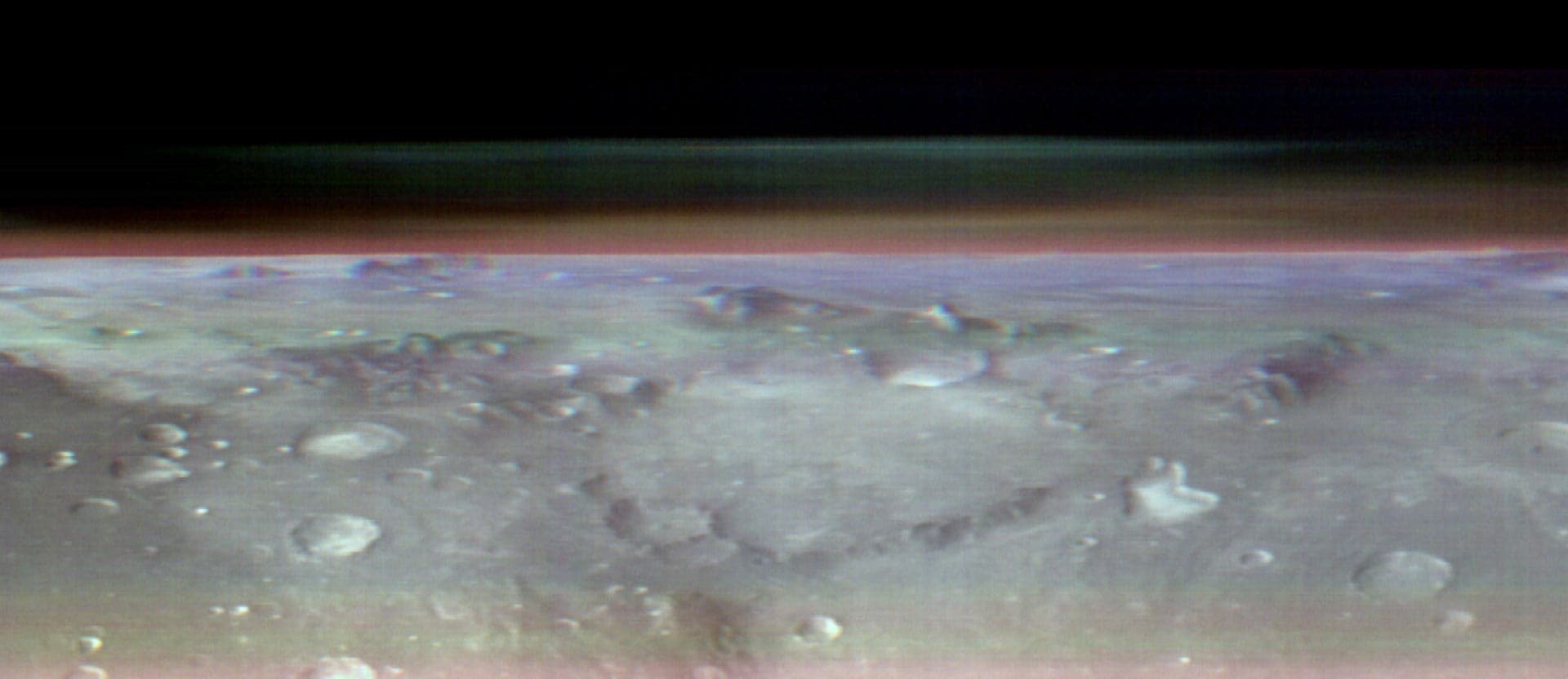
Chances are you’ve marveled at Earth’s beauty through photos taken from the International Space Station. Now, prepare to be equally captivated by Mars from a very similar point of view. Thanks to the long-serving NASA’s Mars Odyssey Orbiter, we’re getting a fresh, awe-inspiring perspective of the Red Planet — a glimpse akin to what astronauts bound for Mars might see in the future.
In May, the Odyssey Orbiter, from an altitude of 400 km — as high above as the International Space Station — captured a series of stunning images. These were meticulously stitched together, revealing a panoramic view. A stunning curve of Mars unfolded, blanketed by a layer of dust and clouds and the sight of its tiny moon, Phobos.
At the heart of this spectacle is the orbiter’s THEMIS camera (Thermal Emission Imaging System), fine-tuned for detecting infrared (heat) emissions. This makes it perfect for discerning Martian surfaces and features, revealing intricacies of ice, rock, sand, and temperature shifts.
What a Mars space station view might look like
Capturing these images wasn’t straightforward. To adjust THEMIS’s focus, engineers had to reorient the entire spacecraft by 90 degrees because the camera itself is fixed, a delicate operation involving both the orbiter’s solar panels and its boosters. The orbiter’s antenna pointed away from Earth during this maneuver, temporarily cutting off communication, making the job all the more challenging not to mention excruciatingly anxiety-inducing.
It was a job that took months of planning to manifest NASA’s vision, but it was all worth it in the end. The spacecraft stayed in this position for at least a full orbit, revealing an unprecedented view of the crater-pocked Martian surface but also the distinct layers of the thin red planet’s atmosphere.
“If there were astronauts in orbit over Mars, this is the perspective they would have,” said Jonathon Hill of Arizona State University, operations lead for THEMIS.
“No Mars spacecraft has ever had this kind of view before.”
But these images are more than just visual wonders. They’re keys to unlocking Martian atmospheric secrets, like the positioning of water-ice and CO2 clouds, as well as its dust layer. This knowledge is crucial for refining our atmospheric models of Mars.

Moreover, Odyssey’s camera also caught Phobos, one of Mars’ tiny potato-shaped moons. THEMIS captured temperature variations on Phobos’ surface, vital information that will bolster the upcoming NASA-JAXA mission meant to explore the moon’s mysteries in detail.
“We got a different angle and lighting conditions of Phobos than we’re used to,” Hill said. “That makes it a unique part of our Phobos dataset.”









